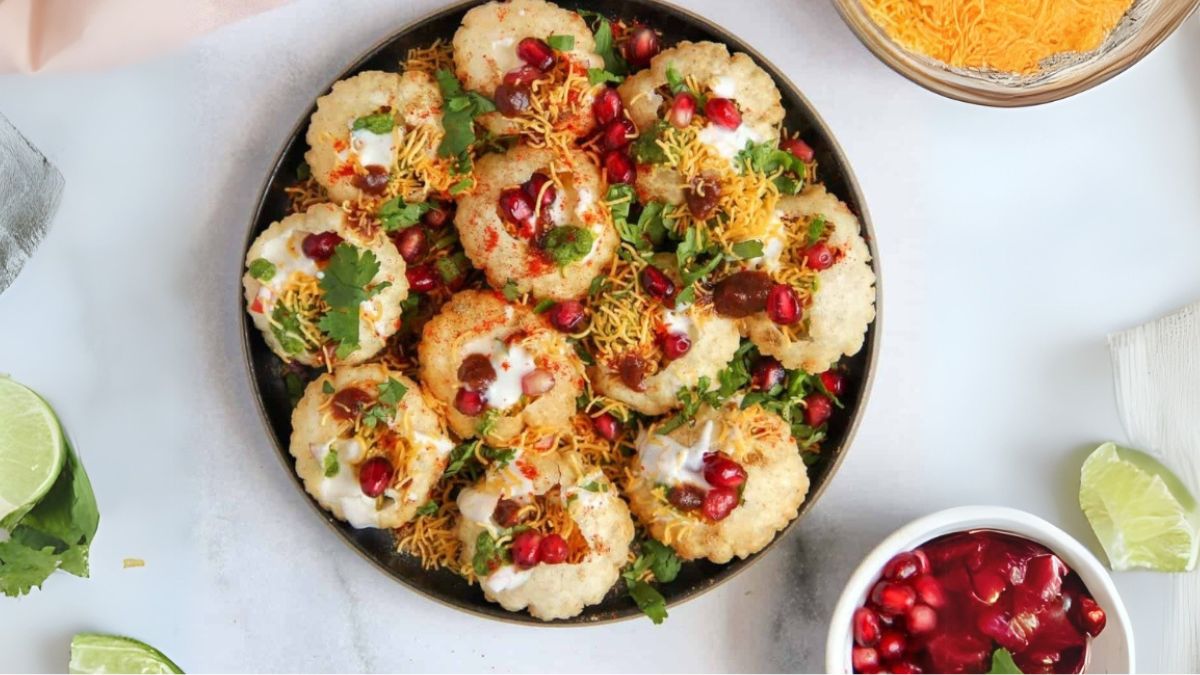
Dahi Puri, also known as Dahi Batata Puri, is a beloved Indian street food that combines crispy puris with flavorful fillings, creamy curd, and tangy-sweet chutneys. Originating from Mumbai, this dish is a popular item in chaat stalls and is cherished for its burst of textures and flavors. While it’s commonly enjoyed on the streets, making Dahi Puri at home ensures better hygiene and customization. This detailed Dahi Puri recipe will help you replicate the authentic street-style taste in your kitchen. Follow these 5 essential steps to create the perfect plate of Dahi Puri.
1. Prepare the Base Ingredients: Boiled Potatoes and Moong for Dahi Puri
The heart of a great Dahi Puri lies in its stuffing. Begin by boiling 2–3 medium-sized potatoes until soft. Peel and mash them lightly, adding salt, red chili powder, roasted cumin powder, and a pinch of chaat masala to taste. Simultaneously, soak green moong (whole mung beans) overnight and boil them until soft but not mushy. These two components form the protein and texture base for the puris. Ensuring they are properly seasoned is critical because this stuffing balances the tang and sweetness of the chutneys and curd.
2. Chutneys for Dahi Puri: Spicy Green Chutney and Sweet Tamarind Chutney
Chutneys are non-negotiable in any authentic Dahi Puri recipe. To prepare the green chutney, blend fresh coriander leaves, mint leaves, green chilies, garlic, ginger, lemon juice, and salt with a little water until smooth. For the tamarind chutney, boil tamarind pulp with jaggery, black salt, dry ginger powder, and roasted cumin powder until it thickens. Both chutneys should be chilled before assembling the puris. These sauces bring out the signature sweet, tangy, and spicy flavor profile that defines Dahi Puri.
3. Crispy Puri Selection and Handling for Dahi Puri Assembly
Choose high-quality golgappa or pani puri puris – they should be round, hollow, and extremely crisp. Lightly tap the top center of each puri to create an opening. It’s important to do this gently to prevent cracking the sides. Lay out 6–8 puris per serving on a flat plate. Ensuring the puris are not stale or soggy is key to maintaining the crunch that contrasts beautifully with the soft fillings and cool curd.
4. Chilled Curd Preparation: Whisked Dahi for Smooth Dahi Puri Texture
The ‘dahi’ in Dahi Puri should be smooth, chilled, and slightly sweetened. Take thick fresh curd (yogurt), add a pinch of salt and ½ teaspoon of sugar, and whisk until creamy and lump-free. You may optionally strain the curd through a sieve for a silkier consistency. Cold curd contrasts with the spicy chutneys and warm stuffing, providing the cooling element typical of this dish. Using unsweetened curd or poorly whisked curd can make the puri soggy and compromise the overall experience.
5. Assembling Dahi Puri the Right Way: Layering for Balanced Flavor
Assembly is crucial for a well-balanced Dahi Puri. Into each puri shell, spoon in the potato-moong filling first, followed by green chutney and tamarind chutney. Generously top with whisked curd, ensuring it covers the puris but doesn’t soak through. Sprinkle finely chopped onions (optional), sev (crispy gram flour vermicelli), and a pinch of chaat masala on top. Garnish with fresh coriander leaves and a drizzle of both chutneys for color. Serve immediately to retain the crunch and freshness of the dish.
